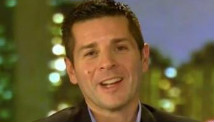(CBS News) Travis Tygart is the head of the U.S. Anti-Doping Agency, which polices U.S. Olympic sports. Lance Armstrong won the world's most grueling event, the Tour de France, seven times. But after Tygart's investigation, Armstrong lost all of his titles. In his first interview, Tygart spoke with us for the premier of a new program, "60 Minutes Sports" on Showtime. Tygart says Armstrong was doping in his very first win at the Tour de France in 1999. The drug was EPO, which boosts endurance.
TRAVIS TYGART: Six samples that were taken from Lance Armstrong were retested in '05. And they were positive.
SCOTT PELLEY: In '99, when the tests were originally taken, was it reported that they were negative?
TYGART: There was no test for EPO. They were not tested for EPO at that time.
PELLEY: And when you tested for them in 2005, you discovered that they were --
TYGART: All six were flaming positive.
PELLEY: Flaming positive?
TYGART: Flaming positive.
Armstrong allegedly offered large "donation" to doping agency
Atty. denies report Lance Armstrong will admit doping
Lance Armstrong sued for more than $1.5M by U.K. newspaper over libel case
Tygart told Pelley that throughout the investigation, witnesses were intimidated to try to keep the code of silence from breaking.
PELLEY: Was Lance Armstrong personally involved in intimidating these other riders to keep them quiet?
TYGART: He was. It was tough. All -- all these witnesses were -- were scared of the repercussions of them simply telling the truth.
PELLEY: What could Lance Armstrong do to them?
TYGART: Incinerate them.
Former teammate Levi Leipheimer felt the heat. In his sworn affidavit, he says he came to a cycling dinner after he testified to the grand jury. Leipheimer says Armstrong was there and sent Leipheimer's wife a text that read, "Run don't walk."
PELLEY: What did she take it to mean?
TYGART: It's a veiled threat. Knowing her husband had just testified, truthfully, in front of the grand jury and had told citizens of this country about this great fraud. It was a message: You better run.
PELLEY: Your investigation showed that there were personal threats made against riders who had decided to come clean. I wonder if there were any threats against you.
TYGART: There were, Scott.
PELLEY: These threats came from where?
TYGART: Emails, letters.
PELLEY: Anonymous?
TYGART: Yeah.
PELLEY: Can you remember any of the lines from the emails or the letters?
TYGART: The worst was probably putting a bullet in my head.
PELLEY: Did you take that seriously?
TYGART: Absolutely.
To hear the rest of Travis Tygart's story, tune into the premiere edition of "60 Minutes Sports" tomorrow at 10:00 p.m. on the Showtime Network.












